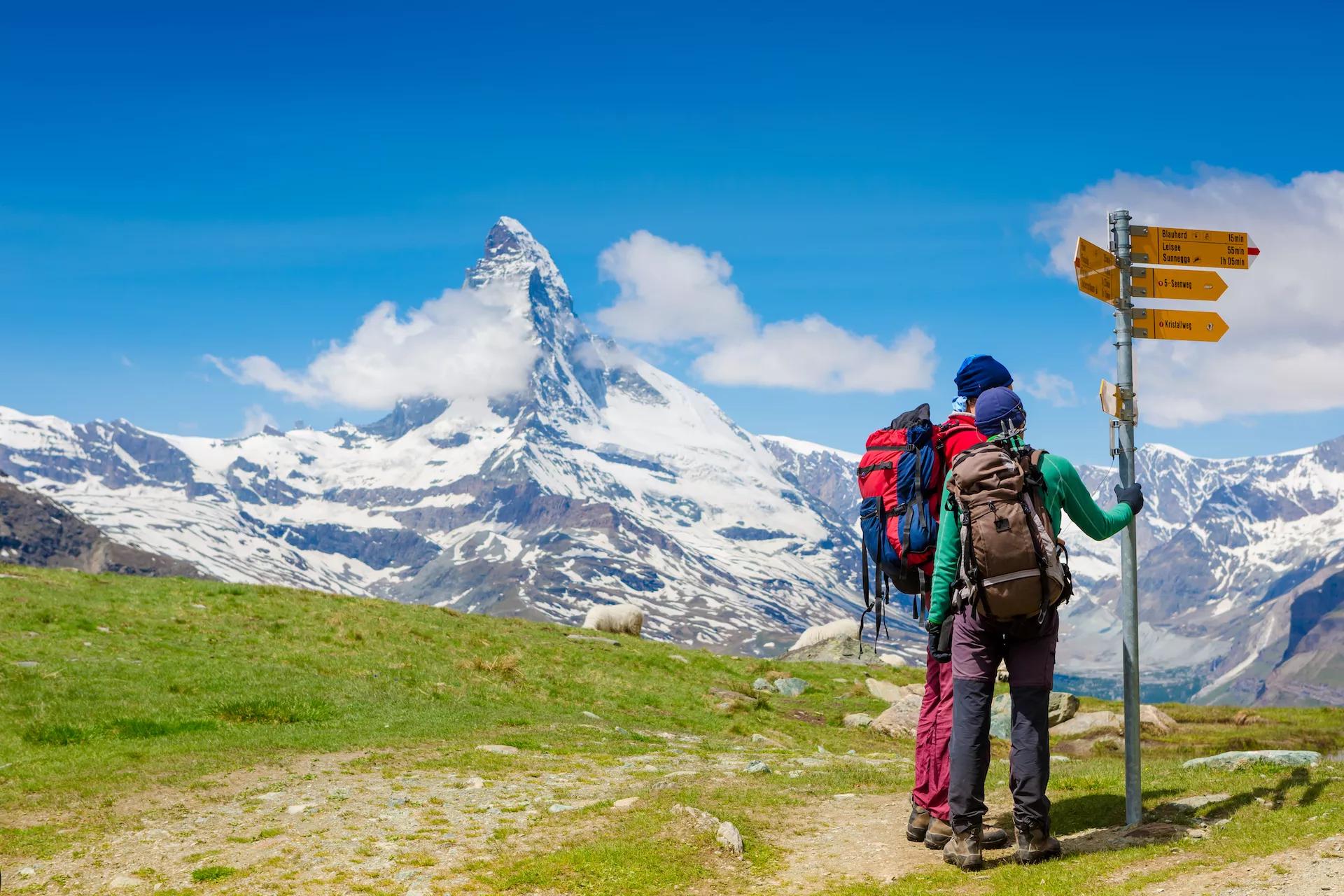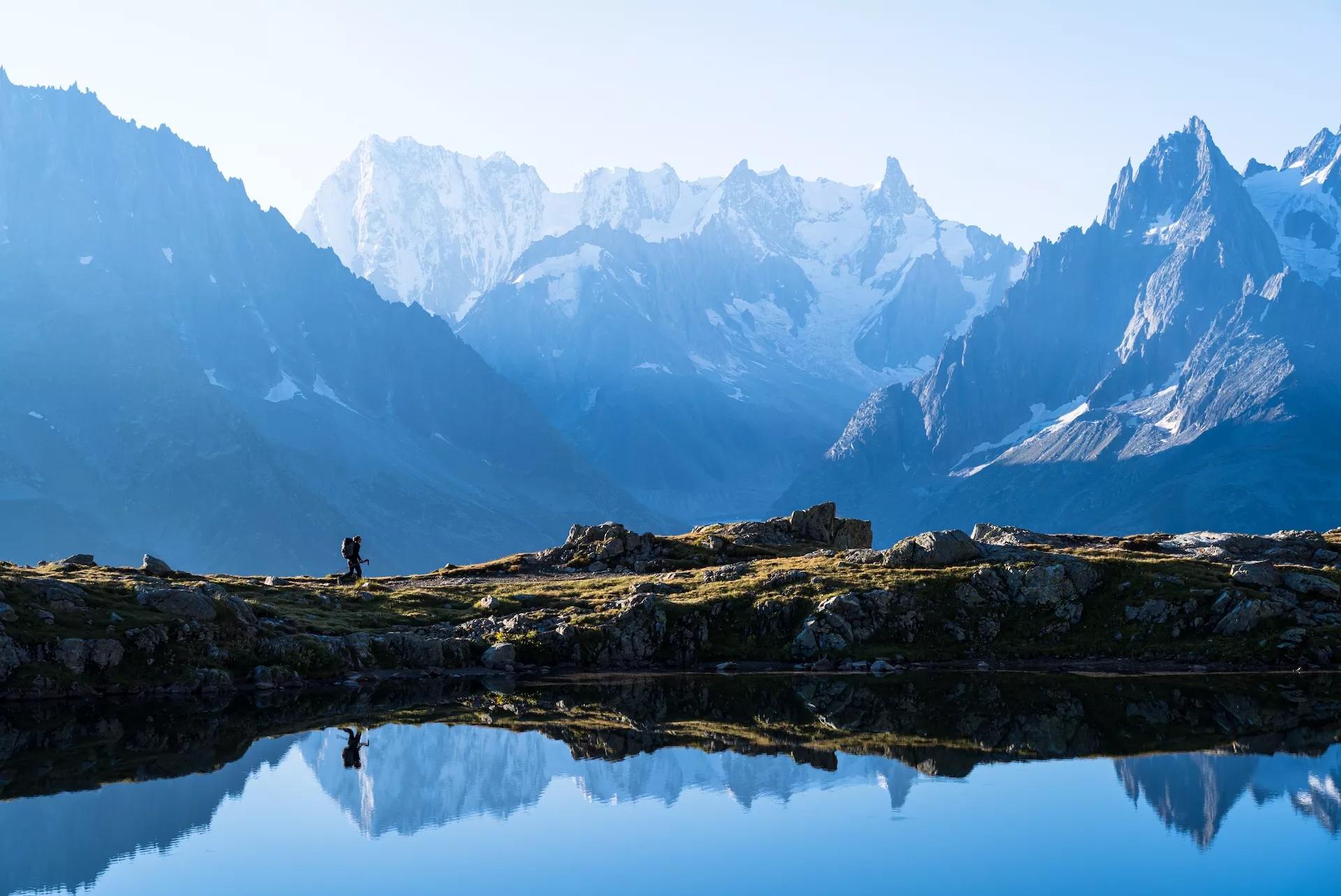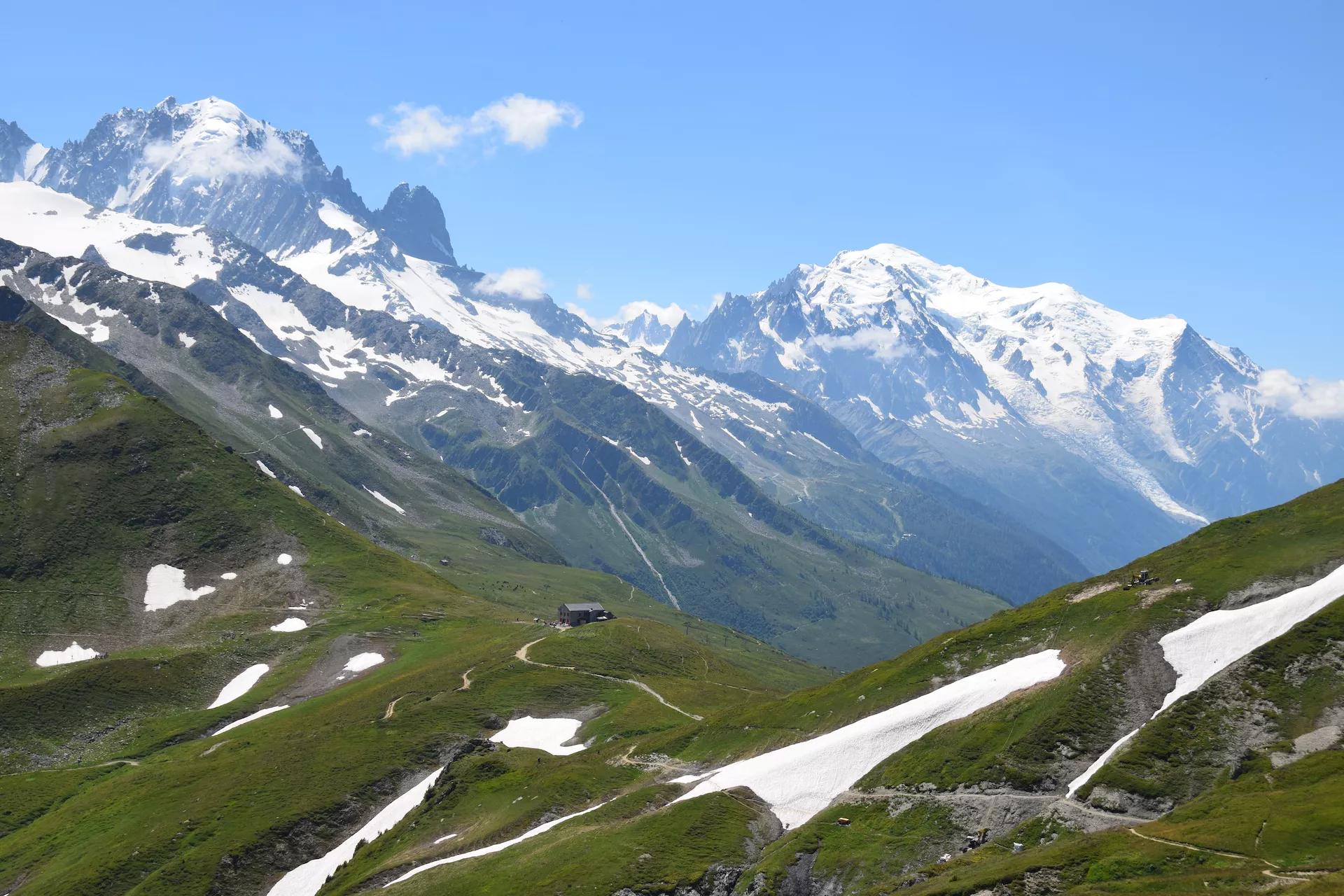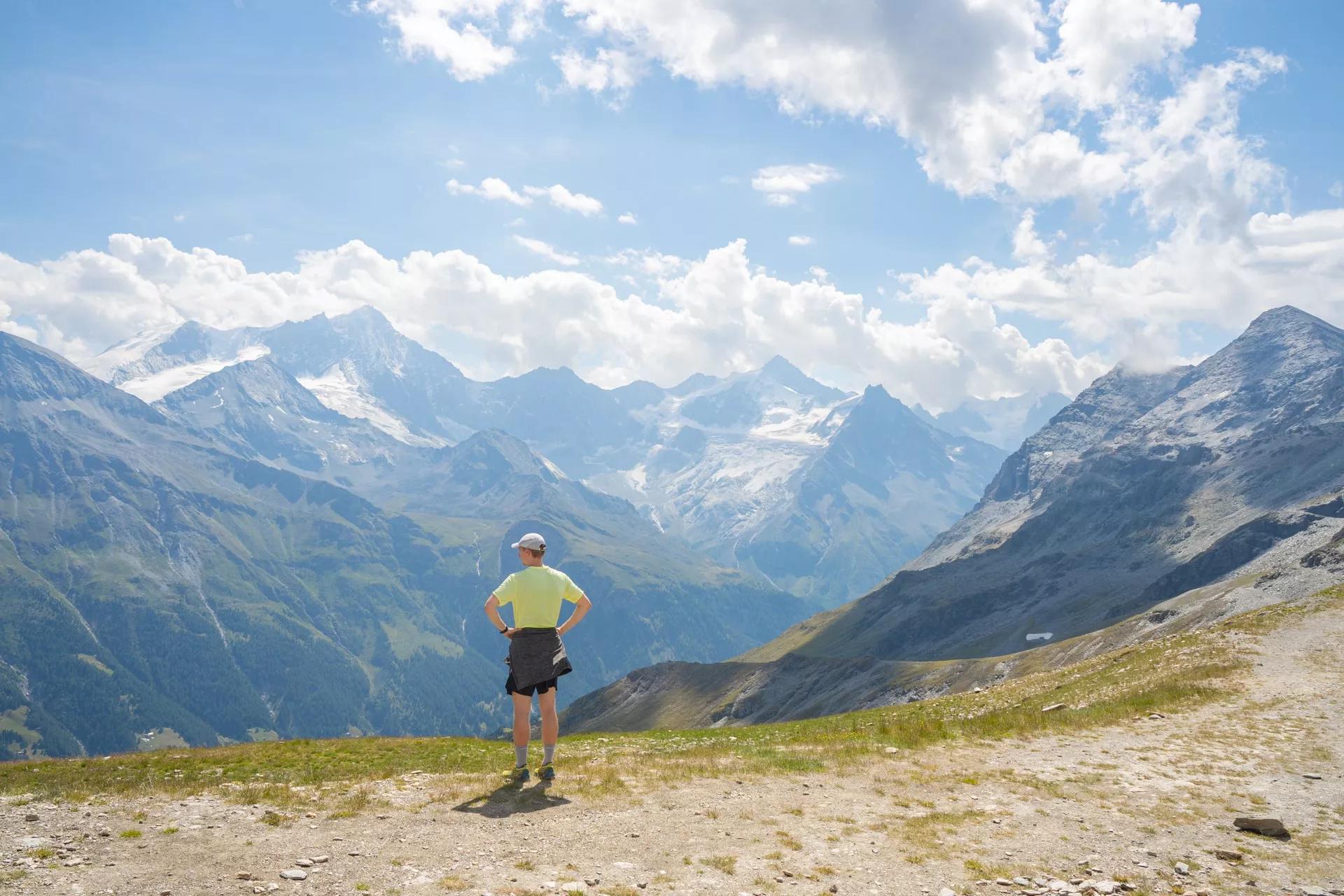17 km and 1350 m of elevation gain / 1160 m of elevation loss












Walker’s Haute Route Self Guided
14 days / 13 nights
|
Starting point
Chamonix
Finish point
Zermatt
Season
From July to September
Technical level
4/5
Fitness level
5/5
Tour type
Hut-to-Hut
Starting point
Chamonix
Finish point
Zermatt
Season
From July to September
Technical level
4/5
Fitness level
5/5
Tour type
Hut-to-Hut
Highlights
- Admire the views of both Mont Blanc and Matterhorn — the two most iconic peaks in the Alps
- Hike the Walker’s Haute Route self-guided and let us handle the logistics
- Trek through the most picturesque landscapes of Switzerland and France
- Complete the full route on this 14-day itinerary
- Sleep in mountain huts with incredible views
Itinerary of the trip
FREE ITINERARY
Get Your Travel Itinerary
Loved the itinerary? Enter your email below, and we'll send a copy straight to your inbox.
What’s included in the price?
Self-guided
NOT INCLUDED
OPTIONAL EXTRAS
What to bring to the tour
- Hiking shoes/boots
- 25 to 45-liter backpack
- Base layer
- Sports T-shirts
- Hiking shorts
- Hiking water-repellent pants
- Waterproof jacket
- Midlayer
- Sports socks and underwear
- Leisurewear for evenings
- Down jacket
- Gloves
- Shade hat/cap
- Warm headwear
- Sunscreen
- Sunglasses
- Headlamp
- Hiking poles
- ID card or passport
- Snacks
- Cash
- Water bottles or hydration pack
- Sleeping liner
- Toiletries
- Toilet paper
- Small first aid kit
The Walker’s Haute Route is probably one of the most epic hikes in the Alps. From Chamonix to Zermatt, from Mont Blanc to Matterhorn – it connects the two most important mountaineering centers in Europe and two of its most iconic mountains. You can confidently say that you’ve been to this part of the world after you experience all the diverse scenery on this long-distance route.
The Walker’s Haute Route is a challenging trek, tougher than some of its counterparts (like Tour du Mont Blanc). This makes it more rewarding, with fewer crowds on its trails. It starts in France, overlapping with the TMB, and soon enters Switzerland, where it stays until the end.
It has 14 stages that a reasonably fit hiker can complete in 14 days of about 5-7 hours of hiking, with optional detours that can extend it for an extra day (Hotel Weisshorn). Crossing many mountain passes that never quite reach 3000 m of elevation, the Haute Route trek is challenging without even considering the planning aspect.
We can help this once-in-a-lifetime adventure be as hassle-free as possible.
We take your wishes and preferences to best advise you on your perfect Walker’s Haute Route itinerary. We book all of your accommodations and other services, so you can focus on the journey. And a few weeks before setting off, we’ll send you the detailed itinerary booklet with the planned GPS route. All that’s left for you is to get to Chamonix and start walking! But if you are short on time, you can also choose to hike just half of the Walker’s Haute Route – the West or the East.
Frequently Asked Questions
Ratings & Reviews

5.0 average rating

The Tour du Mont Blanc was easily one of the most memorable trips I’ve taken in years. From breathtaking views and warm, welcoming people to delicious food and charming mountain huts, every aspect of the journey was unforgettable. The hikes were significantly more challenging than I had anticipated, but the reward was well worth the effort. I can’t overstate how much smoother and more stress-free the experience was thanks to Hut to Hut’s incredibly detailed guides. Having accommodations pre-booked, access to a well-designed GPS trail map, and a comprehensive guide outlining what to expect, what to pack, and what to watch out for made all the difference. If you’re considering hiking the TMB, I wholeheartedly recommend booking with Hut to Hut. Their support turned a great adventure into an exceptional one.


Samo and Eva did a wonderful job in organizing my six-day Slovenian Mountain Trail hike. From the first contact to the delivery of the package with hike details, hut reservations, GPX etc. was efficient. I had a wonderful challenging hike as a solo self-guided hiker. Samo was supportive to the extent possible for my challenging day #4 from Aljazev Hut to Dolicu Hut in very bad weather. All arrangements worked perfectly. Highly recommend them if you want to take the difficulty out of the organization itself and simply enjoy the hiking expereince.


Incredibly route through the Karavank & Julien ranges. Huts were rustic & scenic and all check-ins were smooth. The route guides that Hut-to-Hut provided were extremely helpful, available offline & gave us peace of mind while traveling through new territory. Highly recommend.


Great Trip, Great Company! Nina and her team handled every detail flawlessly. We had originally planned to join a guided group tour, but choosing the flexibility of sleeping in and setting our own pace turned out to be the best decision—and the savings let us upgrade our hotels. The bag-transfer service was seamless from start to finish. I highly recommend them!


We did the five day/four night highlight tour and it was breathtaking! The Tours Du Mont Blanc team was very accommodating of our request for private rooms on the hike (when available) and also with last minute logistics due to the Mount Blanc tunnel closure. Samo and Nina were very responsive and answered all of our many questions :).


Samo and Eva did a wonderful job in organizing my six-day Slovenian Mountain Trail hike. From the first contact to the delivery of the package with hike details, hut reservations, GPX etc. was efficient. I had a wonderful challenging hike as a solo self-guided hiker. Samo was supportive to the extent possible for my challenging day #4 from Aljazev Hut to Dolicu Hut in very bad weather. All arrangements worked perfectly. Highly recommend them if you want to take the difficulty out of the organization itself and simply enjoy the hiking expereince.


Great Trip, Great Company! Nina and her team handled every detail flawlessly. We had originally planned to join a guided group tour, but choosing the flexibility of sleeping in and setting our own pace turned out to be the best decision—and the savings let us upgrade our hotels. The bag-transfer service was seamless from start to finish. I highly recommend them!


The Tour du Mont Blanc was easily one of the most memorable trips I’ve taken in years. From breathtaking views and warm, welcoming people to delicious food and charming mountain huts, every aspect of the journey was unforgettable. The hikes were significantly more challenging than I had anticipated, but the reward was well worth the effort. I can’t overstate how much smoother and more stress-free the experience was thanks to Hut to Hut’s incredibly detailed guides. Having accommodations pre-booked, access to a well-designed GPS trail map, and a comprehensive guide outlining what to expect, what to pack, and what to watch out for made all the difference. If you’re considering hiking the TMB, I wholeheartedly recommend booking with Hut to Hut. Their support turned a great adventure into an exceptional one.


Incredibly route through the Karavank & Julien ranges. Huts were rustic & scenic and all check-ins were smooth. The route guides that Hut-to-Hut provided were extremely helpful, available offline & gave us peace of mind while traveling through new territory. Highly recommend.


We did the five day/four night highlight tour and it was breathtaking! The Tours Du Mont Blanc team was very accommodating of our request for private rooms on the hike (when available) and also with last minute logistics due to the Mount Blanc tunnel closure. Samo and Nina were very responsive and answered all of our many questions :).


All available guidance options
Self-guided
Are you looking for a good adventure and limitless flexibility? Then you should try out a self-guided tour, perfect for independent explorers who want to set their own pace. Without the need to stick to a group schedule, you’re free to linger at scenic viewpoints while the logistics are taken care of in advance.

Hassle-Free
We handle itineraries, accommodations, and anything else you prefer not to deal with, so you can enjoy a carefree hike.

Book with confidence
We are a financially protected company, fully bonded and insured, keeping your money safe and allowing you to travel with confidence.

Tried & Tested Adventures
Only the best hut to hut hikes of Switzerland, cherry-picked by our local team with an in-depth knowledge of the region.

Unbeatable support
Our 24/7 customer support is where we show our passion, bringing you a better experience by making your well-being our number one priority.
























































































